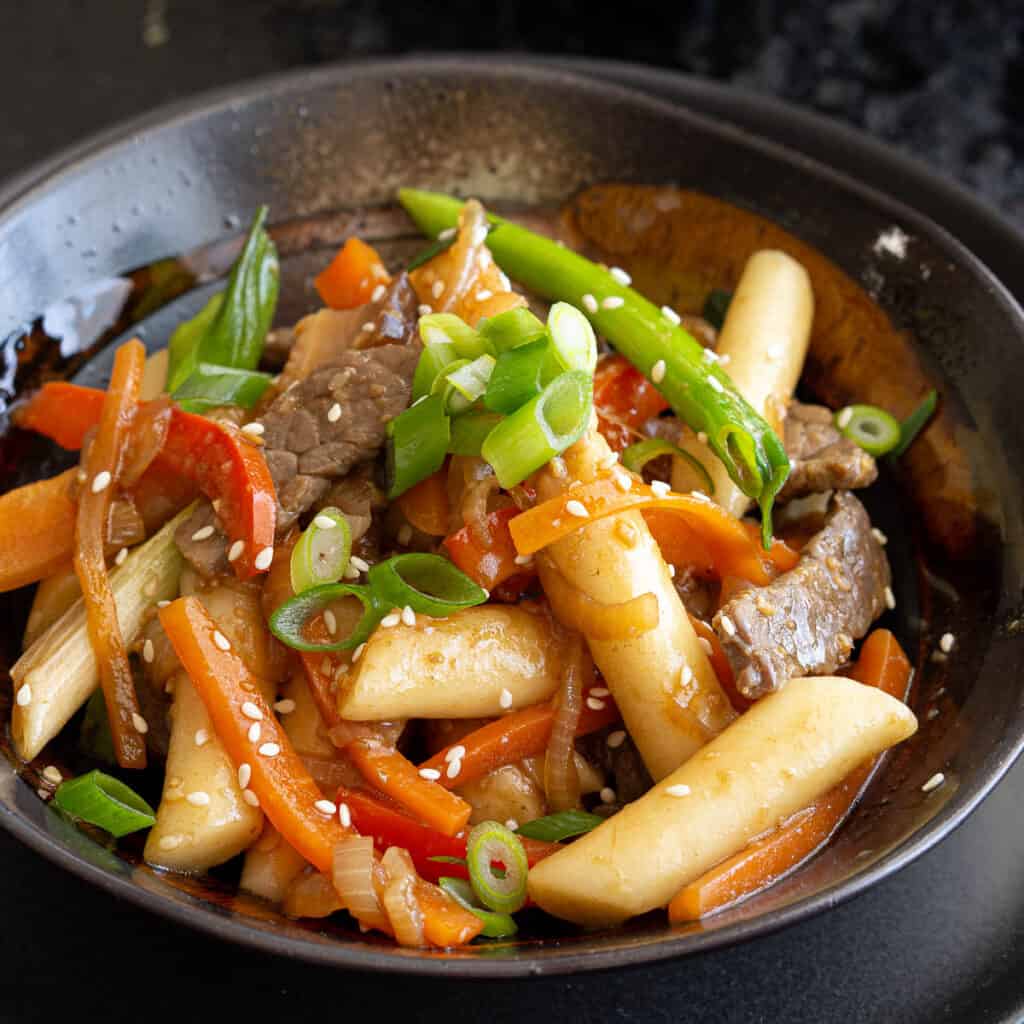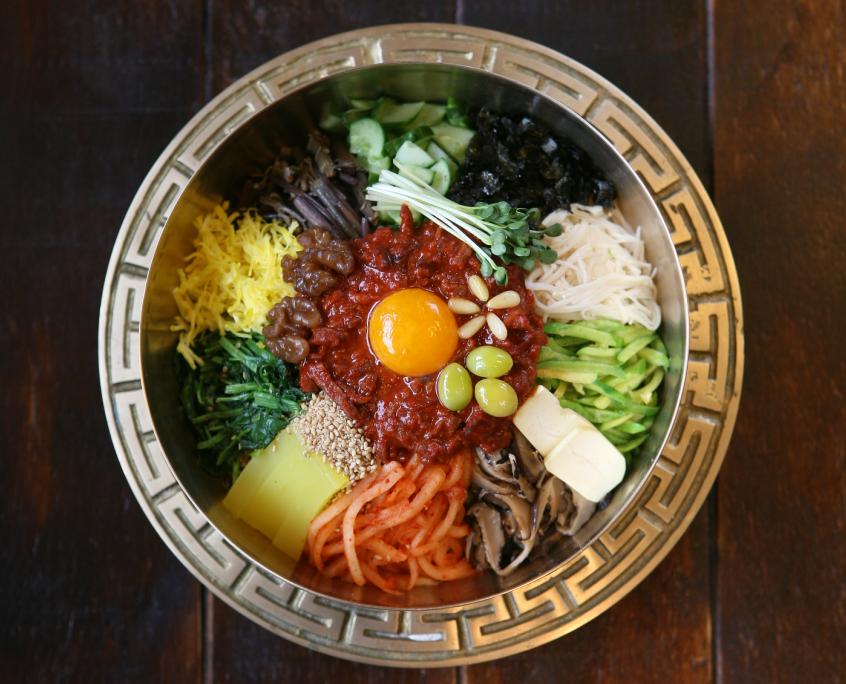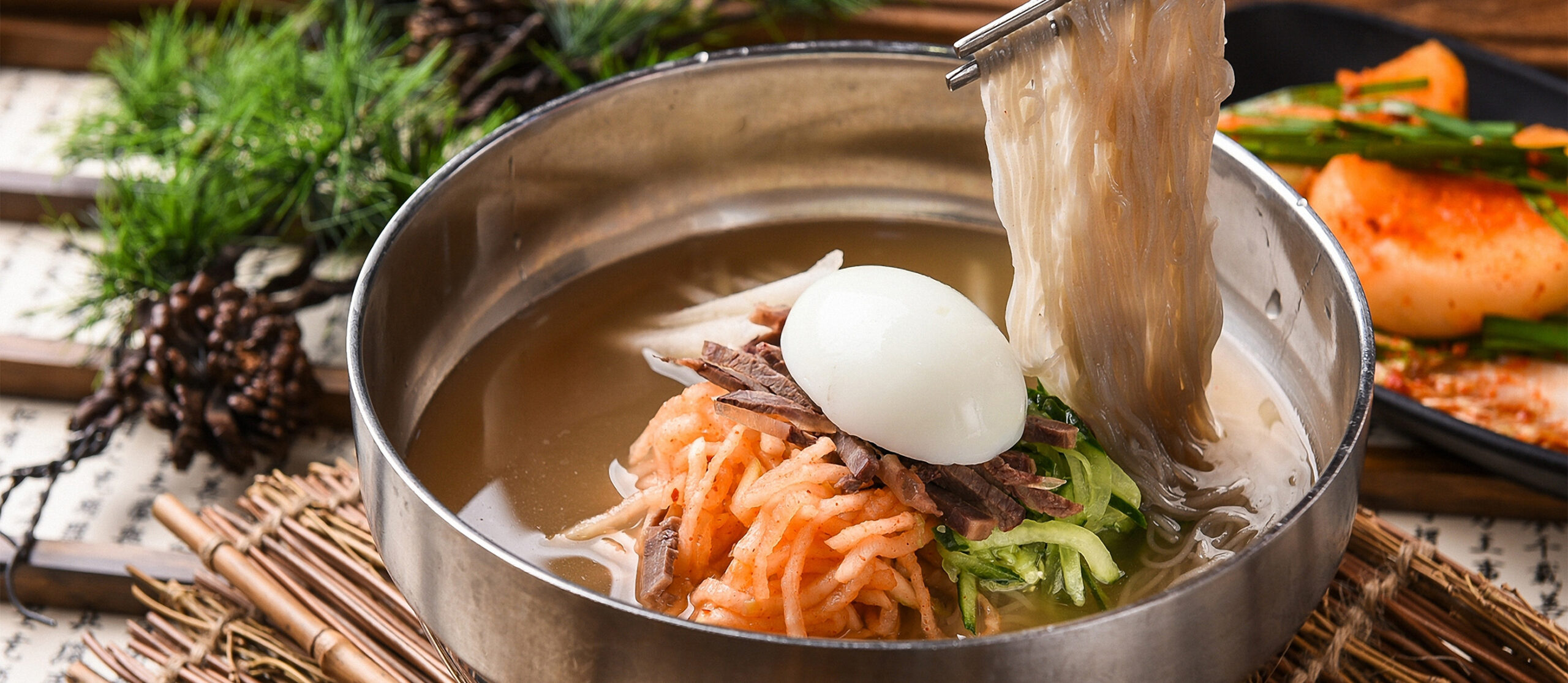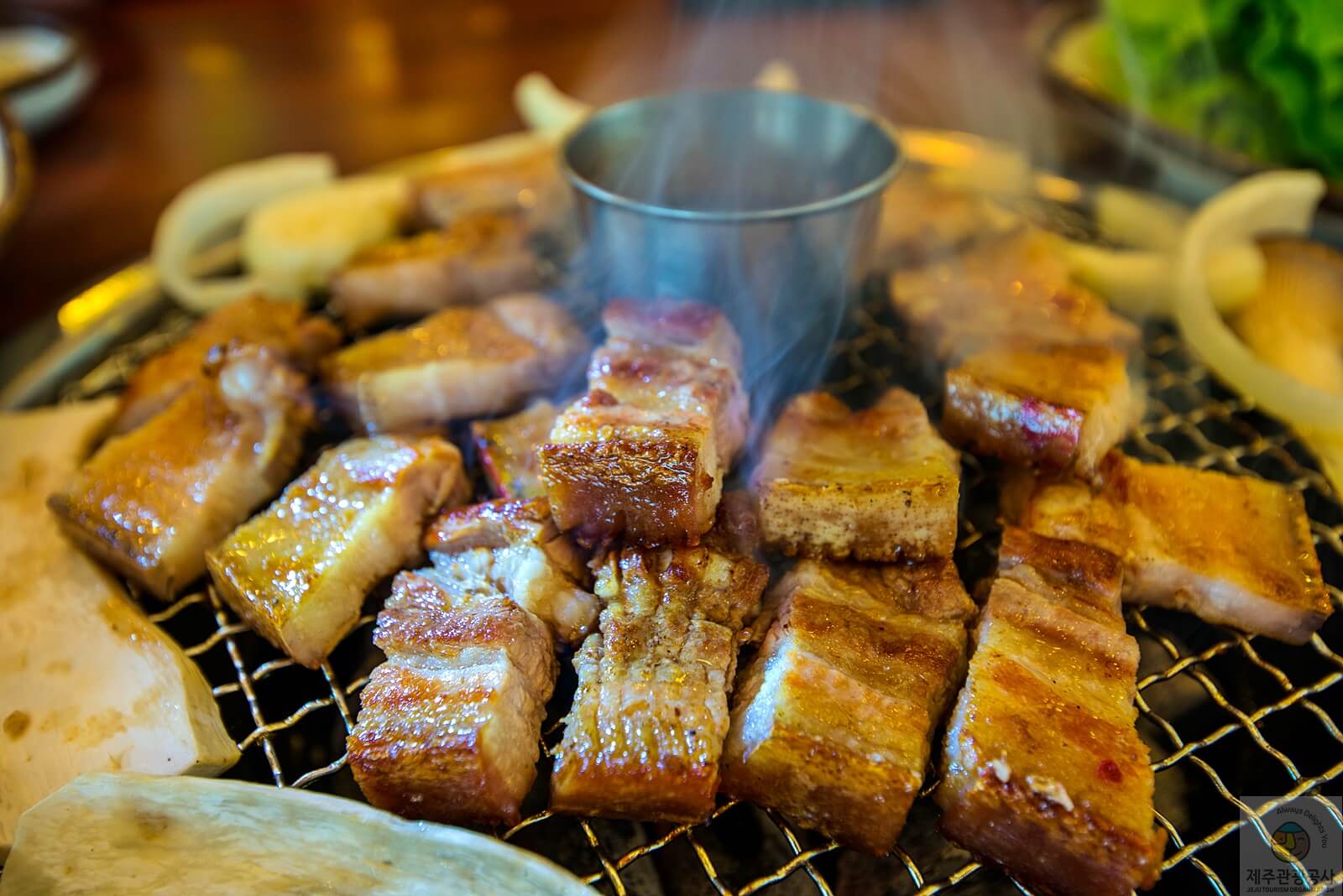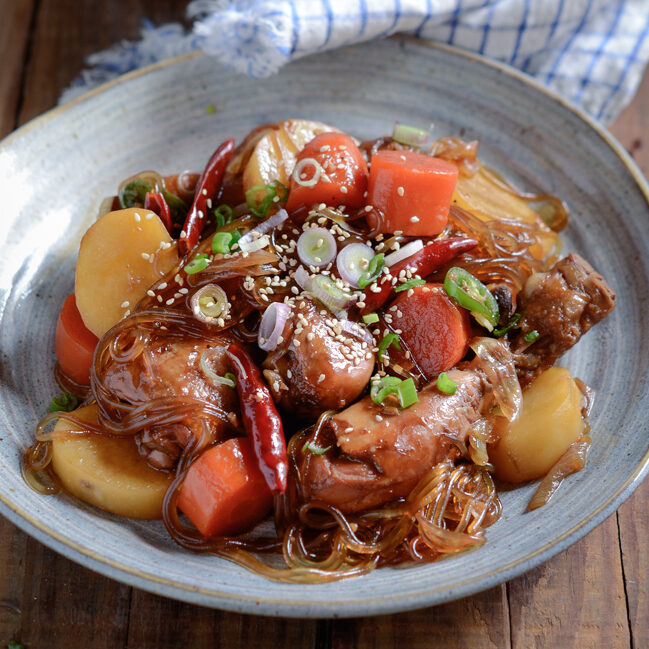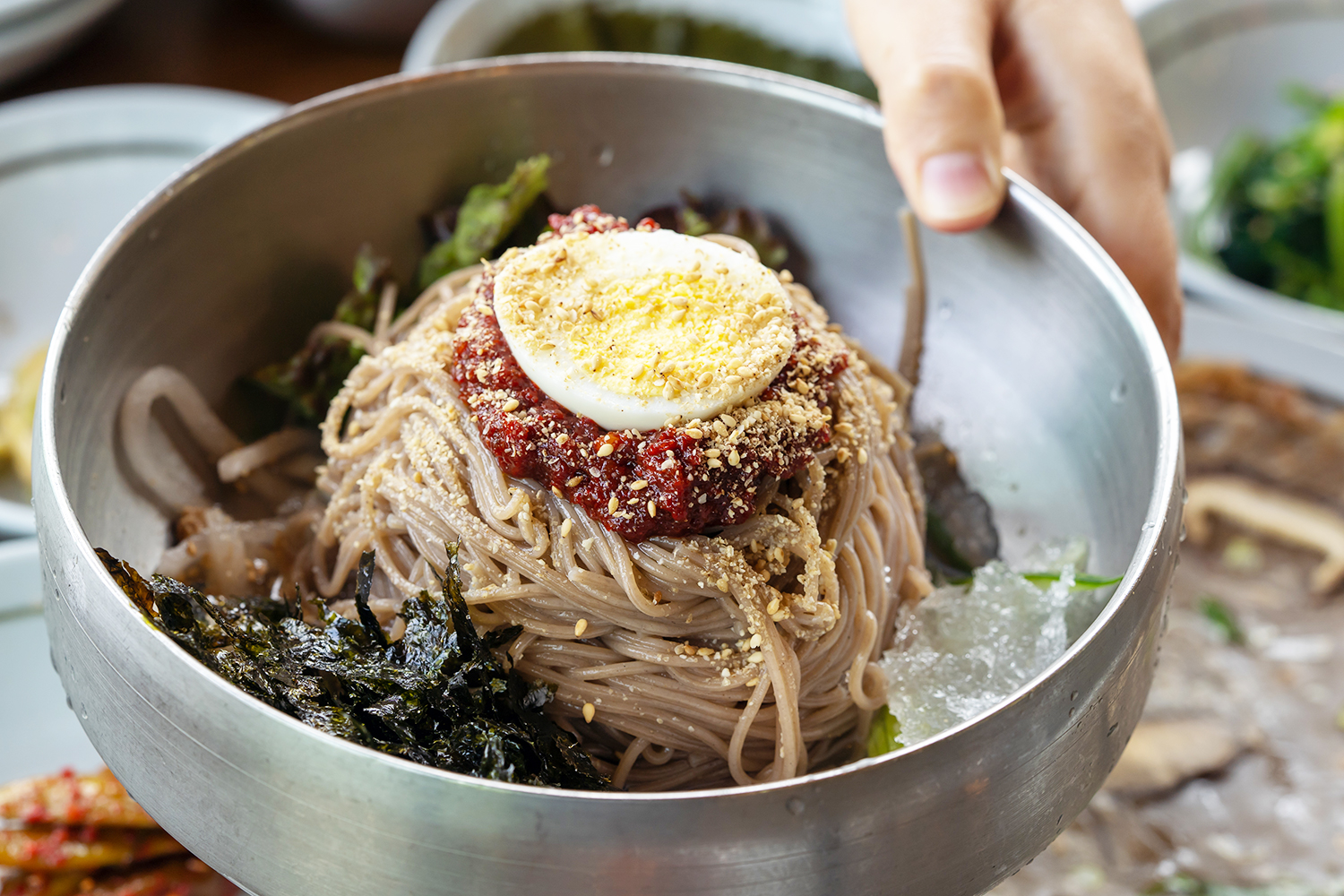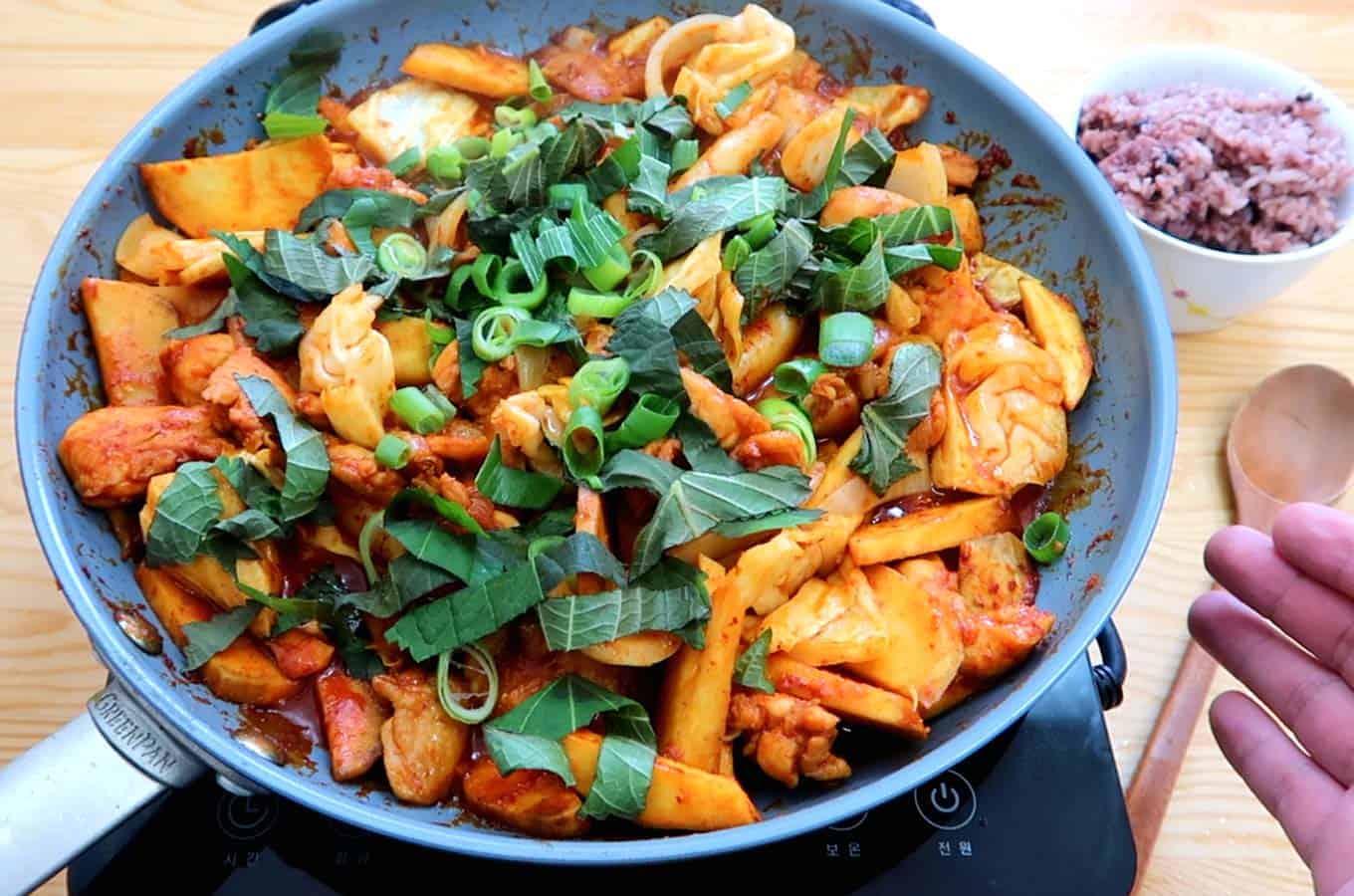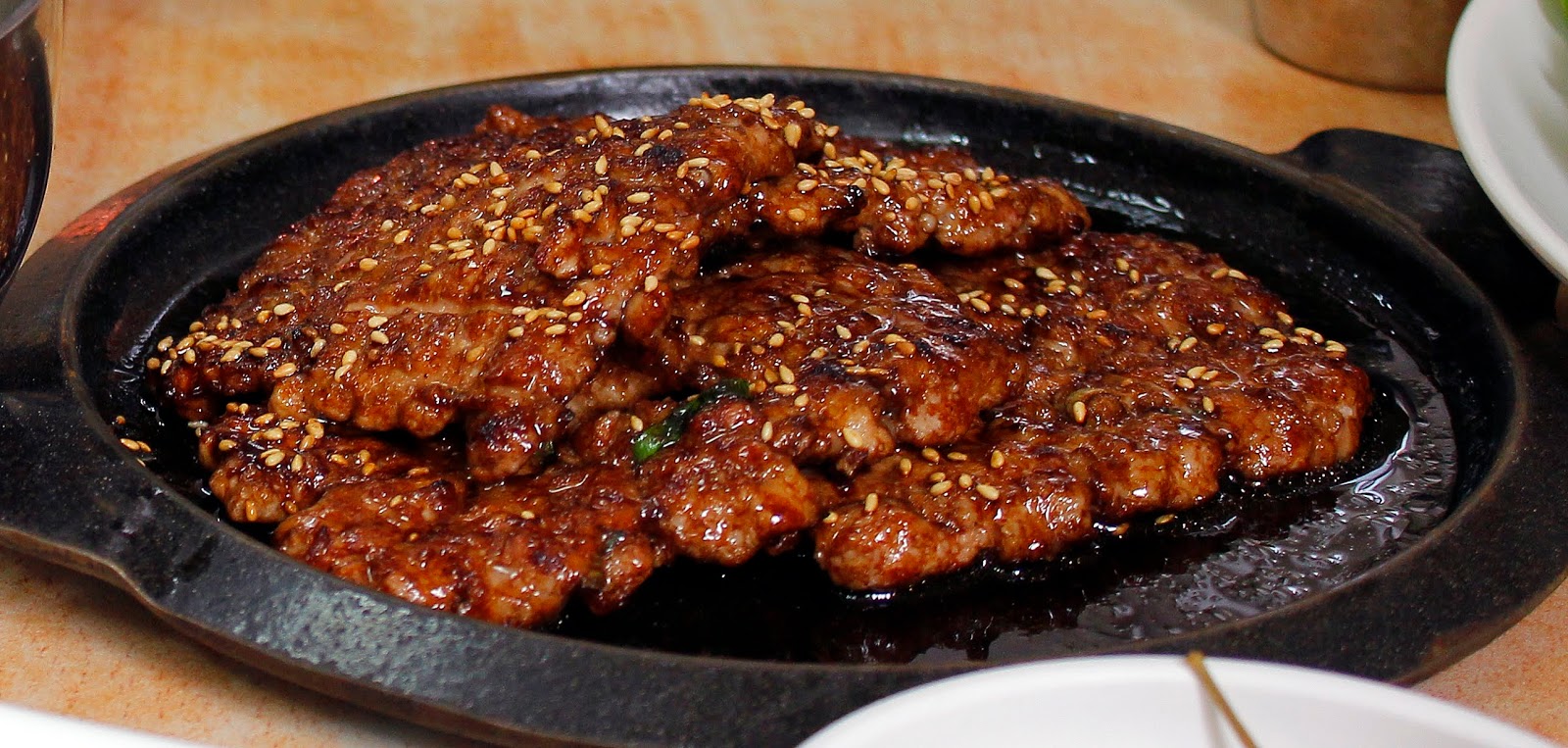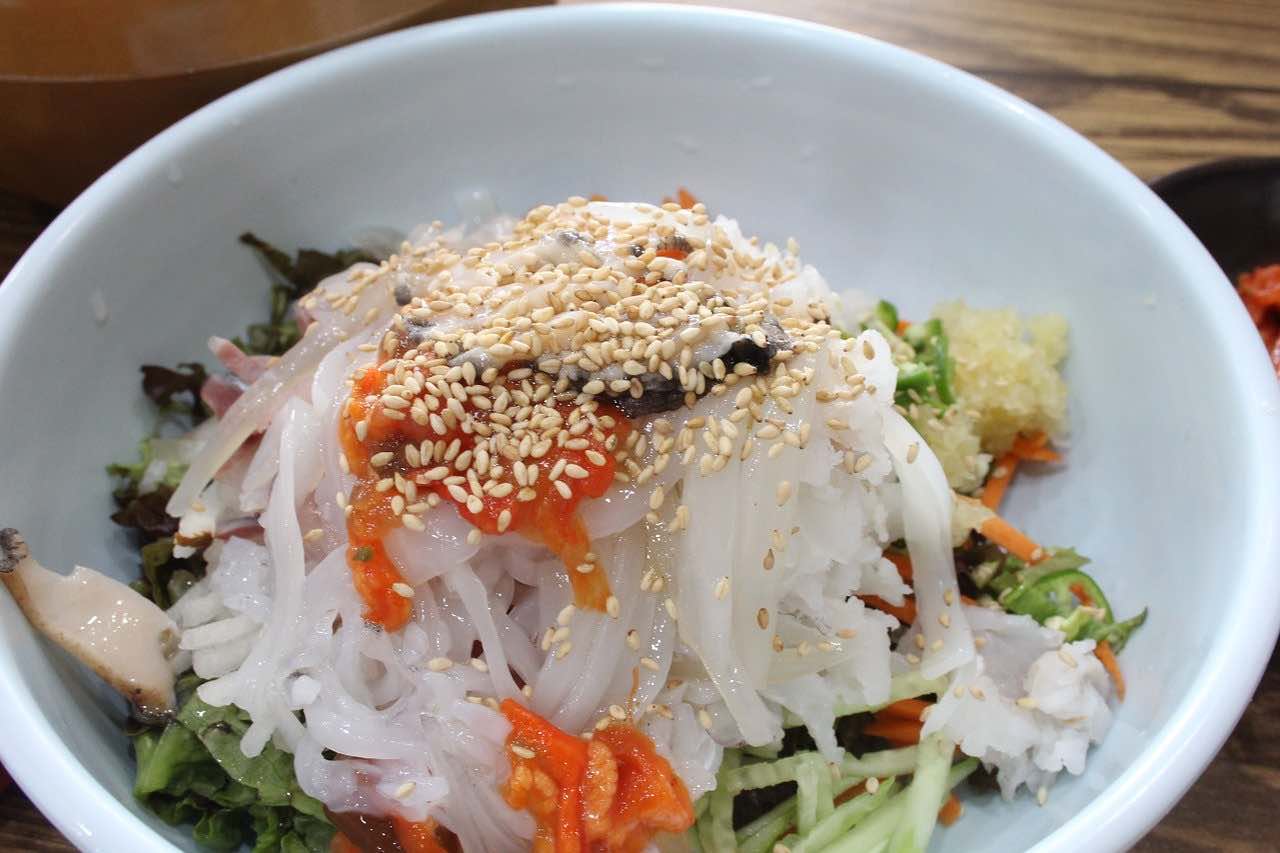South Korean regional cuisine is as diverse and rich as its landscapes. Each region offers unique flavors, ingredients, and traditions. Centuries of culture shaped South Korea’s culinary heritage. From Seoul’s bustling streets 🍜 to Jeju’s serene coastlines 🌊, South Korean cuisine is a feast for the senses. From the spicy dishes of the south 🌶️ to the fresh flavors of the north 🥒, every meal offers a delicious experience at every turn. In this article, we’ll guide you through a culinary journey across the country. Explore signature dishes 🍚 that represent each province’s distinct tastes and history. Discover the best of Korean food and what makes it special to each region 🍴.
Seoul – Gungjung Tteokbokki (Royal Court Rice Cakes)
This dish comes from royal court cuisine. It features chewy rice cakes stir-fried with beef and vegetables in a sweet soy sauce. It dates back to the Joseon Dynasty and was once enjoyed during royal banquets.
Jeonju – Bibimbap
This iconic Korean dish originated in Jeonju. The dish combining rice, vegetables, beef, and a spicy gochujang sauce, all beautifully arranged in a single bowl. Jeonju is home to traditional bibimbap besides it also offers many side dishes. This enhance its rich culinary heritage.
Busan – Milmyeon (Wheat Noodles)
Perfect for the hot coastal summers, Milmyeon is a refreshing noodle dish served in icy broth with spicy seasoning and slices of meat.
It was originally created by refugees during the Korean War as a substitute for buckwheat noodles.
Jeju Island – Heuk-dwaeji (Black Pork BBQ)
Jeju’s signature meat dish features grilled black pig pork, known for its chewy texture and rich flavor. It is often cooked over charcoal for extra smokiness. The pigs are raised on the island and are known for their distinct taste due to their diet and environment.
Gyeongju – Ssambap (Rice Wrap Set)
In this historic city, diners enjoy wrapping rice and side dishes in fresh greens, paired with gochujang or soybean paste.
This dining style reflects the region’s Buddhist and royal culinary influences, emphasizing balance and variety.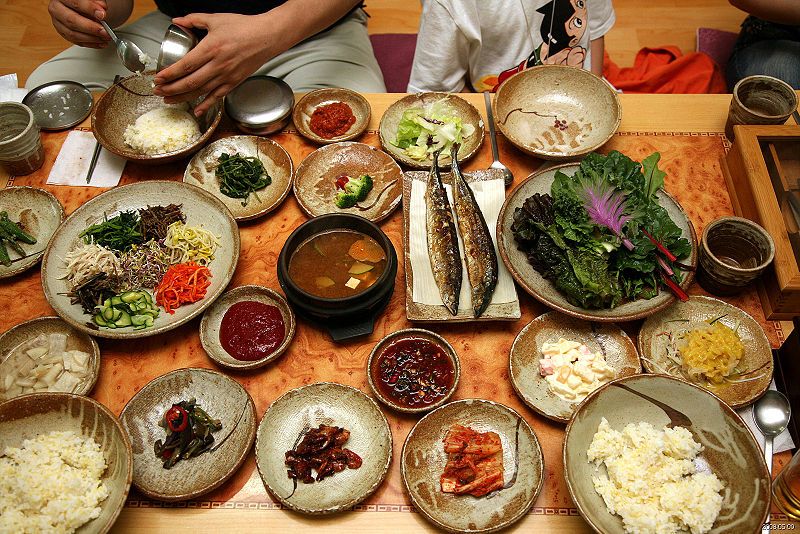
Andong – Jjimdak (Braised Chicken)
This hearty and savory dish features tender chicken braised in soy sauce with potatoes, carrots, glass noodles, and just a hint of spice. It was made popular in Andong’s old market district and has become a favorite across Korea.
Gangwon-do – Makguksu (Buckwheat Noodles)
A refreshing noodle dish made from buckwheat, served cold with a tangy broth and topped with vegetables, often enjoyed in the mountainous regions of Gangwon-do. This dish is especially popular in summer and reflects the region’s reliance on hardy grains like buckwheat due to its cooler climate.
Chuncheon – Dakgalbi (Spicy Stir-fried Chicken)
A local favorite, this dish mixes chicken, cabbage, rice cakes, and spicy sauce, all stir-fried on a hot plate right at your table.
It originated in the 1960s as an affordable option for students and quickly grew into a Korean BBQ staple.
Gwangju – Tteokgalbi (Grilled Short Rib Patties)
Tteokgalbi combines minced beef or pork with spices and forms patties, grilling them until crispy and caramelized. Gwangju’s version stands out for its tender texture and rich, smoky flavor, often pairing with grilled vegetables.
Ulsan – Mulhoe (Cold Spicy Raw Fish Soup)
A chilled, spicy soup made with fresh raw fish, vegetables, and gochujang broth, Mulhoe is especially popular in coastal cities like Ulsan. Locals commonly enjoy it after fishing trips or as a summer delicacy by the sea.
Exploring South Korea’s regional cuisine is a true adventure for any food lover 🍴. Each dish tells a story, ranging from the humble origins of bibimbap in Jeonju 🍚 to the royal flavors of gungjung tteokbokki in Seoul 👑. Similarly, from the savory jjimdak in Andong 🍗 to the fresh seafood in Ulsan 🦑, each dish highlights South Korea’s rich cultural diversity. As a result, every region brings something unique to the table, transforming each meal into an unforgettable experience. Furthermore, as you travel through South Korea, be sure to savor the distinct flavors that each region offers. Indeed, it is the perfect way to connect with the heart of Korean culture ❤️. Don’t miss out on these unforgettable culinary experiences!


